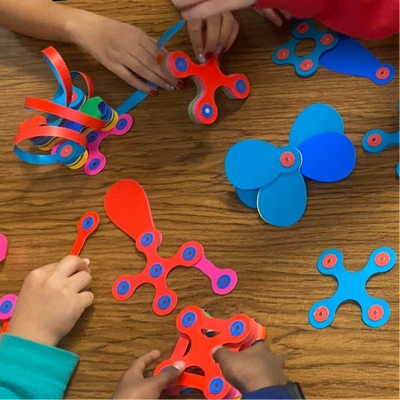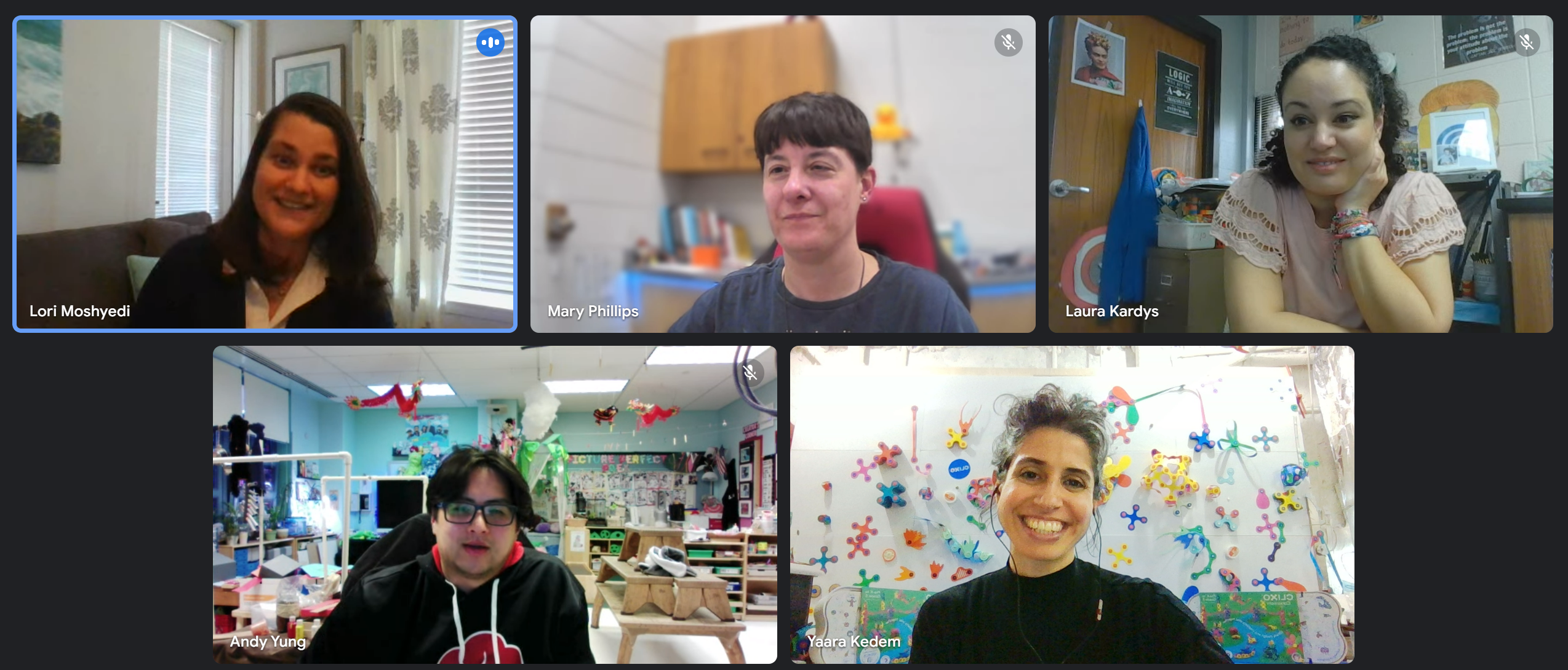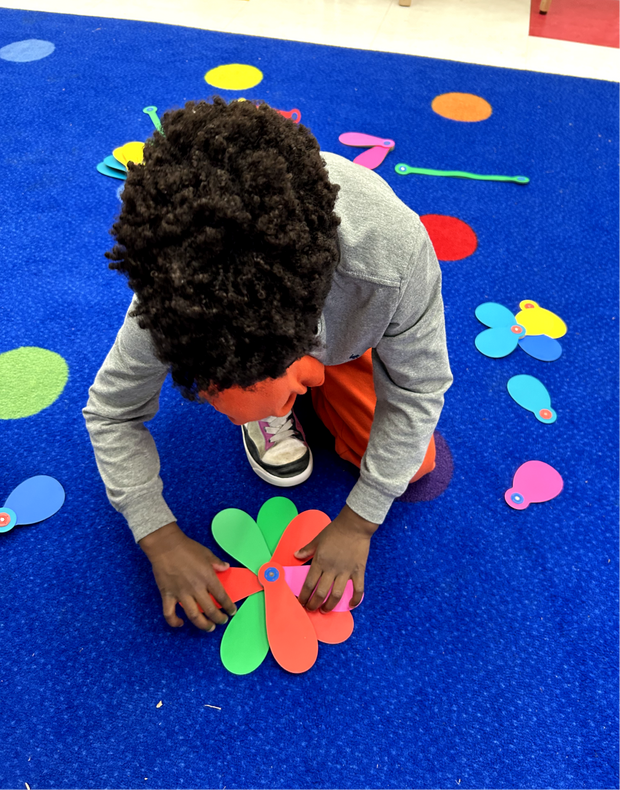By Elizabeth Porter, Master Teacher and Assistant Professor of Practice - Austin, TX
Three ideas on how you can introduce Clixo in an early childhood setting.
In early childhood education, a provocation is an intentional and open-ended arrangement of materials that invites children to explore. Rooted in the Reggio Emilia approach, provocations encourage self-directed, meaningful play, supporting a teacher's goal of facilitating hands-on learning.
Ideas for a provocation can come from the children’s interests and teachers can offer a selection of open-ended building materials along with some concrete, or more recognizable toys to anchor and guide the play.

Here is an example of a provocation inspired by the children’s interest in outer space. It includes concrete elements like astronaut bendy figurines as well as loose parts such as marbles, dancing scarves, and a nesting shapes puzzle. Teachers set up these provocations with the intention that children will engage with the materials imaginatively—either at the table or by incorporating them into the blocks area as blocks accessories.

Here is another example of a provocation designed to extend the fingerplay “5 Green and Speckled Frogs”, which had been a class favorite to sing at circle time. The small toy frogs can be animated and explored alongside loose parts like coconut shells, recycled corks and fake flowers, creating a small world for play on the table.
The First Provocation

When we brought Clixo into our classroom we first introduced folding the quad in small groups. We discussed the magnetic properties we observed while folding the quad and drew conclusions about how to build with these pieces. Over the course of the week we introduced new shapes within the Classroom Pack. Some pieces (like the long strap) were introduced after children continued to consistently make wearable creations like headbands and crowns.

The Clixo cards in the Classroom Pack provided visual inspiration for the children to get ideas, inspiring both concrete structures to replicate and demonstrating how the material could be folded and manipulated.
The Second Provocation
After exploring the Clixo materials for a couple of weeks, the children participated in a small group collaborative game. Using a magnetic figure as a starting point, each child took turns adding a single Clixo piece to their individual creations. After 3 to 5 rounds, the group completed their builds and shared their creations, taking turns explaining what they had made.

An extension to this small-group activity is to challenge each child to connect their creation together, so the group has only one, very large Clixo creation. Then, children can discuss what it is they have made, and what they should name it!
For this provocation, the materials for the collaborative game were displayed in the same way as during small group introduction, providing a visual anchor to remind the children how they could use the pieces.
The Third Provocation
Clixo stayed in the preschool classroom for several weeks before going away for several more. When it returned to the classroom, teachers reintroduced the familiar material in a new way.

The children had already been exploring the mechanics of Clixo and how the pieces could be manipulated. When they saw Clixo next, it was part of a magical provocation featuring unicorns, reflecting the whimsical pretend play the children had recently been observed engaging in.
In addition to a variety of Clixo pieces that suggested bridges and roads, the provocation included loose parts like gems, shells and a rainbow nesting puzzle. Children enjoyed enclosure play of small gems within Clixo quads and engaging in imaginative play with unicorns on Clixo-designed terrain.
The highlight, however, was the inclusion of multiple dancing scarves. Children quickly discovered that Clixo pieces could function as magnetic closures for capes, cloaks, and headscarves. The addition of the scarves inspired children to apply their Clixo-building knowledge to create wearable costumes they could incorporate into their whimsical play.
Conclusion
The provocations shown here demonstrate how intentional material arrangements can spark children’s curiosity, creativity and collaboration in early childhood settings. By incorporating Clixo into playful provocations–whether inspired by small group activities, songs, or extensions of a storybook– teachers can offer children opportunities to explore design and creative problem solving while enriching imaginative play. These examples highlight how open-ended materials like Clixo inspire self-directed play, inspire meaningful connections and transform children’s ideas into tangible, creative expression.
About Elizabeth
Elizabeth Porter is a Master Teacher at the Priscilla Pond Flawn Child & Family Laboratory and an Assistant Professor of Practice at the University of Texas at Austin. She received her bachelor’s degree in Fine Arts from the University of Texas at Austin and her master’s degree in Fine Arts from Hunter College (CUNY) in New York. She is a state-certified educator, with a specialization in early childhood art. In addition to being an educator, Elizabeth is an artist whose work has been exhibited in museums and galleries in California, New York, and throughout Texas.




